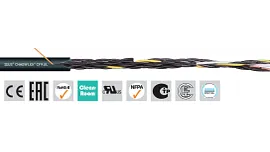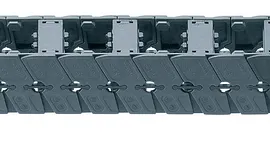Alterar idioma :
Cabos e sistemas de alimentação de energia comprovam-se na máquina de moldagem por injeção de alta velocidade
A Hekuma confia no cabo de controlo chainflex® e na calha articulada E6 há mais de 10 anos
Os sistemas de automação de alto desempenho da Hekuma para a indústria de plásticos trabalham com tempos de ciclo a cada segundo. Para o fornecimento de energia das pinças, isto significa que o primeiro milhão de cursos é alcançado após apenas quatro a seis semanas - e isto sob condições ambientais adversas, tais como calor, elevada aceleração e movimento em dois eixos. É aqui que os nossos cabos chainflex® provam o seu valor e são sujeitos a quase tanto stress como no nosso laboratório de testes interno.
Produtos utilizados

Cabo de controlo CF9
- 4 anos de garantia
- Encontre sempre o cabo mais barato e com garantia de funcionamento com a verificação de preços

Calha articulada da série E6
- Elevada estabilidade e longa vida útil
- Para cargas adicionais elevadas em longas distâncias de deslocação
Aconselhamento personalizado
Terei todo o gosto em esclarecer as suas questões

Beatriz Maria
Product manager dry-tech
Escrever e-mailEnvios e consultas
Pessoalmente:
De segunda a sexta-feira, das 9h às 18h - via telefone ou chat
Online:
24h


